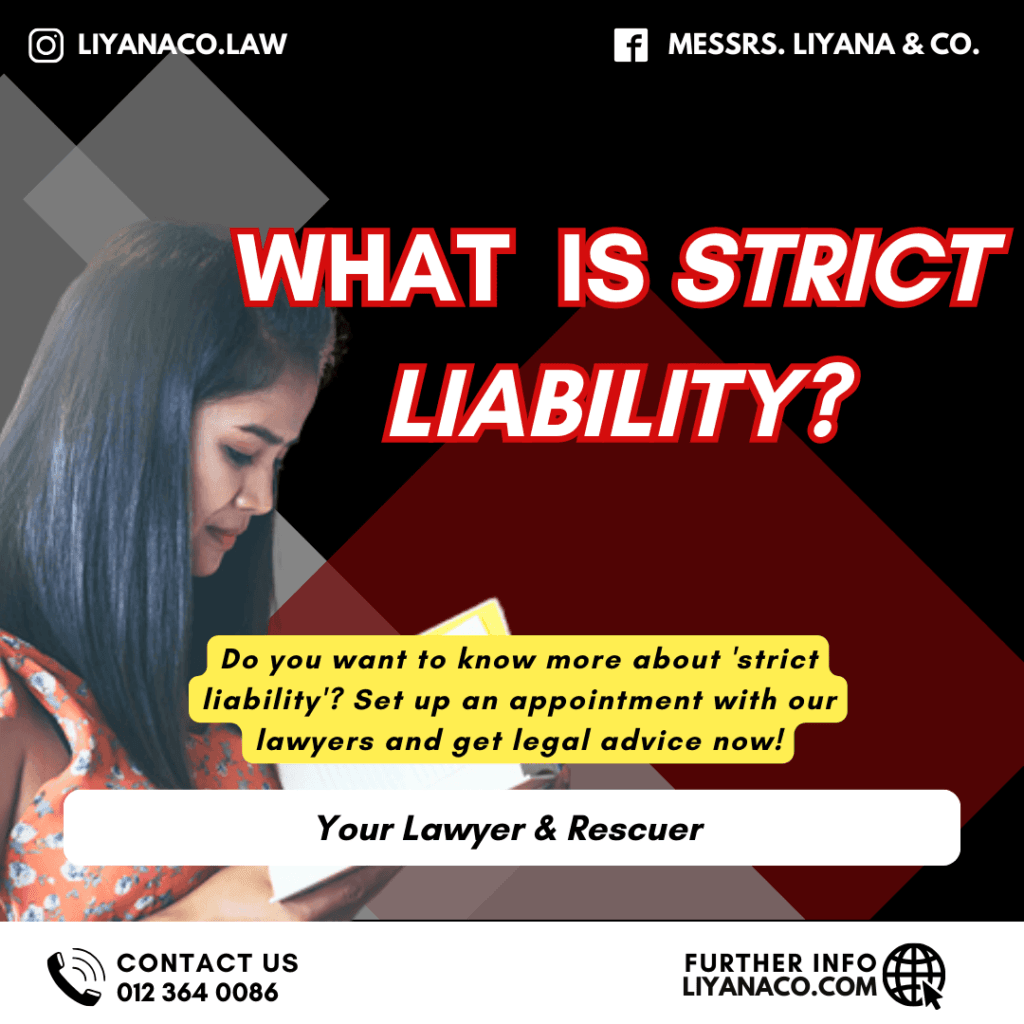
‘Strict liability’ is a situation where the Defendant is considered guilty for committing an offence without taking into account whether the Defendant had the intention or not to commit the offence.
What are the elements of strict liability that need to be proven?
1. There must be dangerous things.
2. There must be intentional storage of things.
3. Plaintiff must prove that the things or objects escape to a place that the Defendant has control.
What is meant by vicarious liability?
Vicarious liability is a situation where one party is responsible for the wrongful actions of another party, even if the responsible party did not directly commit the wrongful act. This often applied in employer-employee relationships, but it can extend to other situations as well.
What are the elements of vicarious liability that you need to know?
● There must be a tortious act.
● There must be a special relationship between the alleged person and the tortfeasor and this special relationship exists between the employer and employee.
● The tortious act must be committed within the course of employment.
What is the difference between ‘strict liability’ and ‘vicarious liability?’
‘Strict liability’ requires the Defendant to be personally involved in the offence while ‘Vicarious liability’ does not require the Defendant to be personally involved in the offence, but involves the Defendant in the offence committed by another person due to the existence of an employer-employee relationship.
Example of strict liability situation: A has a dog named James. One day, A took his dog out for a walk. James suddenly acted out of control when he saw another dog, Jake, and attacked the dog and its owner, B. Jake and his owner, B, suffered serious injuries. In this situation, A has ‘strict liability’ towards B.
Example of vicarious liability situation: D is an employee of a company, MNO Sdn Bhd. While on his way to deliver goods using a car owned by MNO Sdn Bhd, D negligently ran a red light and had an accident with another car. The car and its owner, F, suffered severe damage and injuries. In this situation, MNO Sdn Bhd, as D’s employer may be held vicariously liable for D’s actions, because D committed the actions during his employment with MNO Sdn Bhd.
What case has been decided in the Court regarding ‘vicarious liability?’
In K Sdn Bhd and Amirul [2022] 6 MLJ 369, Amirul, the respondent filed a lawsuit against Jaafar and the appellant, K Sdn Bhd. Jaafar was employed by K Sdn Bhd as a personal bodyguard and, while on duty, he shot and killed Dato’ M with a firearm provided by K Sdn Bhd. He also shot Amirul when Amirul approached the scene of the incident. Amirul sued Jaafar for causing him harm and K Sdn Bhd for vicarious liability, claiming that K Sdn Bhd should be held responsible for Jaafar’s actions.
The High Court ruled in favor of Amirul, finding both Jaafar and K Sdn Bhd liable for damages. The Court of Appeal upheld the High Court’s decision, and this appeal was filed against that ruling. The appeal was ultimately dismissed, as the court found that Jaafar’s actions were closely connected to his employment as a bodyguard, making K Sdn Bhd vicariously liable for his wrongful acts.
Want to know about other cases that can help you? Contact us now!
�� Contact us at:
“Your Lawyer & Rescuer”